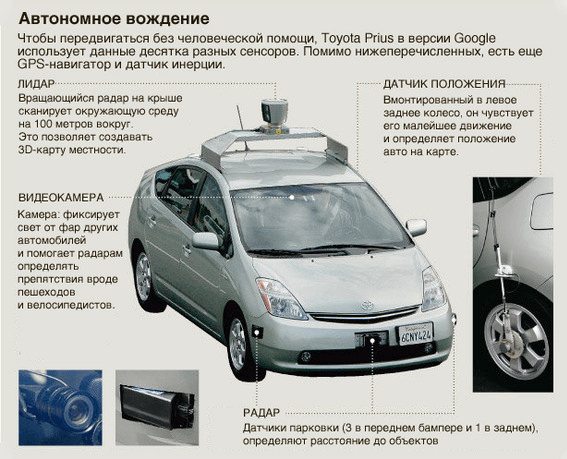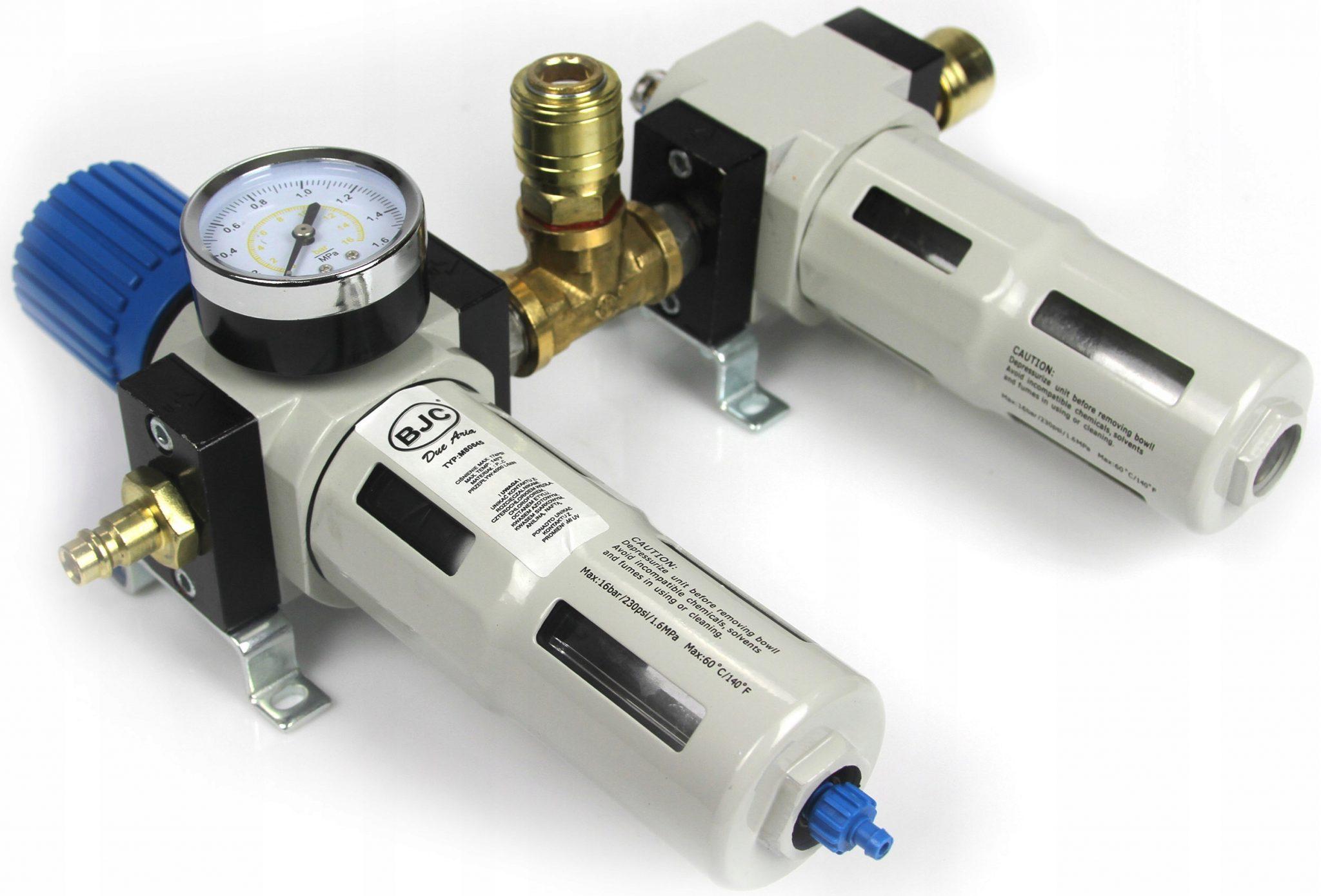
How the self-driving system works
The German government recently announced that it wants to promote the development of technology and plans to create specialized infrastructure on motorways. Alexander Dobrindt, German Minister of Transport, announced that the section of the A9 motorway from Berlin to Munich will be built in such a way that autonomous cars can travel comfortably along the entire route.
Glossary of abbreviations
ABS Anti-blocking system. A system used in automobiles to prevent wheel lock.
ACC Adaptive cruise control. A device that maintains an appropriate safe distance between moving vehicles.
AD Automated driving. Automated driving system is a term used by Mercedes.
ADAS Advanced driver assistance system. Extended driver support system (like Nvidia solutions)
ASSK Advanced intelligent cruise control. Radar based adaptive cruise control
AVGS Automatic vehicle control system. Automated surveillance and driving system (for example, in a car park)
DIV Unmanned intelligent vehicles. Smart cars without drivers
ECS Electronic components and systems. General name for electronic equipment
IoT Internet of things. Internet of Things
HIM Intelligent transport systems. Intelligent Transport Systems
TO DEAL Light detection and ranging. A device that works similar to a radar - it combines a laser and a telescope.
LKAS Lane keeping assist system. Lane Keeping Assist
V2I Vehicle-infrastructure. Communication between vehicle and infrastructure
V2V Vehicle to vehicle. Communication between vehicles
The plan includes, among other things, the creation of infrastructure to support communication between vehicles; for these purposes, a frequency of 700 MHz will be allocated.
This information not only shows that Germany is serious about development motorization without drivers. By the way, this makes people understand that unmanned vehicles are not only vehicles themselves, ultra-modern cars stuffed with sensors and radars, but also entire administrative, infrastructure and communication systems. It makes no sense to drive one car.
Lots of data
The operation of a gas system requires a system of sensors and processors (1) for detection, data processing and rapid response. All this should happen in parallel at millisecond intervals. Another requirement for the equipment is reliability and high sensitivity.
Cameras, for example, need to be high resolution in order to recognize fine details. In addition, all this must be durable, resistant to various conditions, temperatures, shocks and possible impacts.
An inevitable consequence of the introduction cars without drivers is the use of Big Data technology, that is, obtaining, filtering, evaluating and sharing huge amounts of data in a short time. In addition, systems must be secure, resistant to external attacks and interference that can lead to major accidents.
Cars without drivers they will only drive on specially prepared roads. Blurry and invisible lines on the road are out of the question. Intelligent communication technologies – car-to-car and car-to-infrastructure, also known as V2V and V2I, enable the exchange of information between moving vehicles and the environment.
It is in them that scientists and designers see significant potential when it comes to developing autonomous cars. V2V uses the 5,9 GHz frequency, also used by Wi-Fi, in the 75 MHz band with a range of 1000 m. V2I communication is something much more complex and does not only involve direct communication with road infrastructure elements.
This is a comprehensive integration and adaptation of the vehicle to traffic and interaction with the entire traffic management system. Typically, an unmanned vehicle is equipped with cameras, radars and special sensors with which it “perceives” and “feels” the outside world (2).
Detailed maps are loaded into its memory, more accurate than traditional car navigation. GPS navigation systems in driverless vehicles must be extremely accurate. Accuracy to a dozen or so centimeters matters. Thus, the machine sticks to the belt.
1. Building an autonomous car
The world of sensors and ultra-precise maps
For the fact that the car itself sticks to the road, the system of sensors is responsible. There are also usually two additional radars on the sides of the front bumper to detect other vehicles approaching from both sides at an intersection. Four or more other sensors are installed at the corners of the body to monitor possible obstacles.
2. What an autonomous car sees and feels
The front camera with a 90-degree field of view recognizes colors, so it will read traffic signals and road signs. Distance sensors in cars will help you maintain a proper distance from other vehicles on the road.
Also, thanks to the radar, the car will keep its distance from other vehicles. If it does not detect other vehicles within a 30m radius, it will be able to increase its speed.
Other sensors will help eliminate the so-called. Blind spots along the route and detection of objects at a distance comparable to the length of two football fields in each direction. Safety technologies will be especially useful on busy streets and intersections. To further protect the car from collisions, its top speed will be limited to 40 km/h.
W car without a driver The heart of Google and the most important element of the design is a 64-beam Velodyne laser mounted on the roof of the vehicle. The device rotates very quickly, so the vehicle "sees" a 360-degree image around it.
Every second, 1,3 million points are recorded along with their distance and direction of movement. This creates a 3D model of the world, which the system compares with high resolution maps. As a result, routes are created with the help of which the car goes around obstacles and follows the rules of the road.
In addition, the system receives information from four radars located in front and behind the car, which determine the position of other vehicles and objects that may unexpectedly appear on the road. A camera located next to the rearview mirror picks up lights and road signs and continuously monitors the vehicle's position.
Its work is complemented by an inertial system that takes over position tracking wherever the GPS signal does not reach - in tunnels, between tall buildings or in parking lots. Used to drive a car: images collected when creating a database laid out in the form of Google Street View are detailed photographs of city streets from 48 countries around the world.
Of course, this is not enough for safe driving and the route used by Google cars (mainly in the states of California and Nevada, where driving is allowed under certain conditions). cars without driver) are accurately recorded in advance during special trips. Google Cars works with four layers of visual data.
Two of them are ultra-precise models of the terrain along which the vehicle is moving. The third contains a detailed roadmap. The fourth one is the data of comparison of fixed elements of the landscape with moving ones (3). In addition, there are algorithms that follow from the psychology of traffic, for example, signaling at a small entrance that you want to cross an intersection.
Perhaps, in a fully automated road system of the future without people who need to be made to understand something, it will turn out to be redundant, and vehicles will move according to pre-adopted rules and strictly described algorithms.
3. How Google's Auto Car Sees Its Surroundings
Levels of automation
The level of vehicle automation is evaluated according to three fundamental criteria. The first relates to the system's ability to take over control of the vehicle, both when moving forward and when maneuvering. The second criterion concerns the person in the vehicle and their ability to do something other than drive the vehicle.
The third criterion involves the behavior of the car itself and its ability to "understand" what is happening on the road. The International Association of Automotive Engineers (SAE International) classifies road transport automation into six levels.
From the point of view automation from 0 to 2 the main factor responsible for driving is the human driver (4). The most advanced solutions at these levels include Adaptive Cruise Control (ACC), developed by Bosch and increasingly used in luxury vehicles.
Unlike traditional cruise control, which requires the driver to constantly monitor the distance to the vehicle in front, it also does a minimal amount of work for the driver. A number of sensors, radars and their interfacing with each other and with other vehicle systems (including drive, braking) make a car equipped with adaptive cruise control not only maintain a set speed, but also a safe distance from the vehicle in front.
4. Levels of automation in cars according to SAE and NHTSA
The system will brake the vehicle as needed and slow down aloneto avoid collision with the rear of the vehicle in front. When the road conditions stabilize, the vehicle accelerates again to the set speed.
The device is very useful on the highway and provides a much higher level of safety than traditional cruise control, which can be very dangerous if used incorrectly. Another advanced solution used at this level is LDW (Lane Departure Warning, Lane Assist), an active system designed to improve driving safety by warning you if you unintentionally leave your lane.
It is based on image analysis - a camera connected to a computer monitors lane-limiting signs and, in cooperation with various sensors, warns the driver (for example, by vibration of the seat) about a lane change, without turning on the indicator.
At higher levels of automation, from 3 to 5, more solutions are gradually introduced. Level 3 is known as "conditional automation". The vehicle then acquires knowledge, that is, collects data about the environment.
The expected reaction time of the human driver in this variant is increased to several seconds, while at lower levels it was only a second. The on-board system controls the vehicle itself and only if necessary notifies the person of the necessary intervention.
The latter, however, may be doing something else altogether, such as reading or watching a movie, being ready to drive only when necessary. At levels 4 and 5, the estimated human reaction time increases to several minutes as the car acquires the ability to react independently throughout the entire road.
Then a person can completely stop being interested in driving and, for example, go to sleep. The SAE classification presented is also a kind of vehicle automation blueprint. Not the only one. The American Highway Traffic Safety Agency (NHTSA) uses a division into five levels, from fully human - 0 to fully automated - 4.
